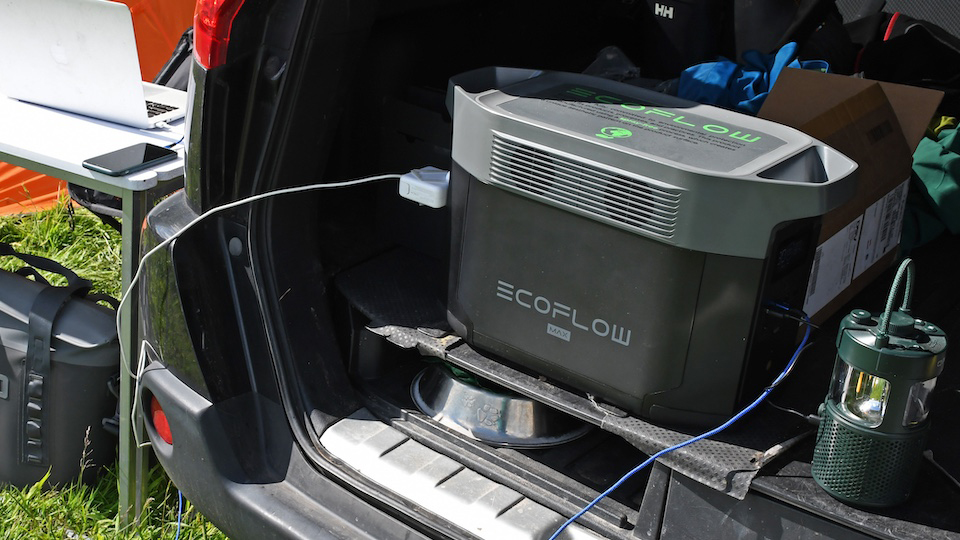
Meet the reviewer
EcoFlow DELTA Max (2000): first impressions
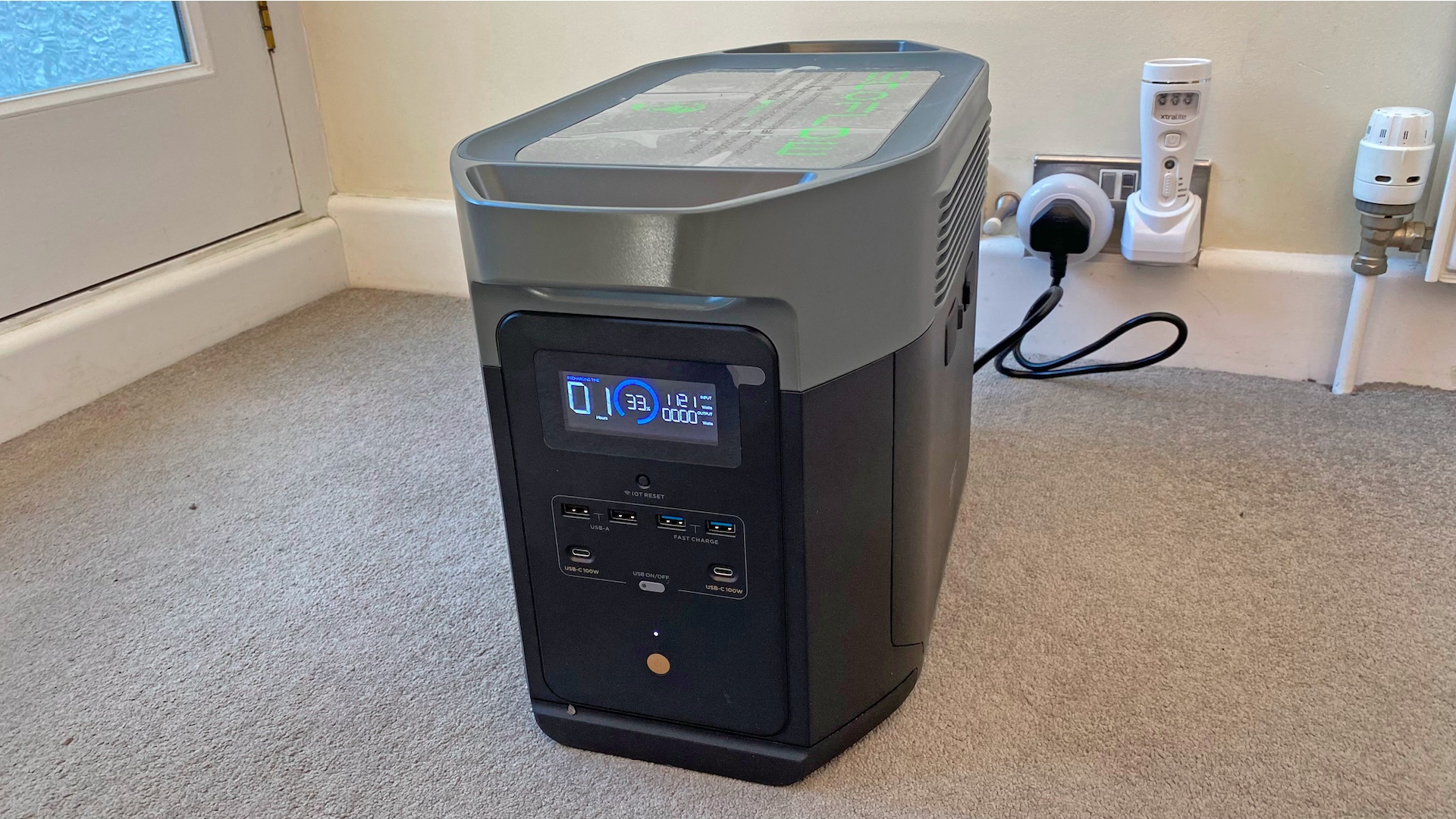
Even the most committed outdoorsy people are increasingly dependent on digital devices and electrically powered gadgets these days, and with the use of environmentally damaging disposable batteries rapidly (and thankfully) being consigned to the past, we require ever-more access to power in order to keep things working.
• List price: $2,099 (US) / £1,049 (UK) / €1,299 (EU)
• Output: 2400W (up to 3400W fast dual charging)
• Charge time: 1.6 hours (AC) / 21 hours (12V car charger) / 5.6-11.2 hours (using 4x110W solar panels)
• Weight: 22kg/48lb
• Dimensions: 49.7cm x 24.2cm x 30.5cm / 19.6in x 9.5in x 12in
• Charge Temperature: 0°-45°C / 32°-113°F
• Capacity: 2016Wh
If you’re spending more than a night or two in the wilds, then everything from your smartwatch and phone (for which we rely on for so many outdoor-orientated apps now) to your headlamp, camping lantern and flashlight will need recharging at some point. For social outdoor gatherings, celebrations, sporting events and other alfresco shindigs, portable speakers and projectors are becoming increasingly popular, all of which require juice. And if you’re lucky enough to be going on an extended camping holiday, doing a road trip or living your best van life, then you’ll likely also need to power a refrigerator or cooler too, plus kettles and other cooking devices.
There’s a plethora of smaller power packs on the market, which you can pop in a backpack or bikepacking bag to keep your phone alive and provide backup during lightweight trips, but for bigger vehicle-based adventures, you need something more substantial. And substantial is exactly what the EcoFlow DELTA Max (2000) is, in every conceivable way.
Until recently, you would have had to rely on a noisy, smelly, polluting diesel-drinking generator to supply large amounts of power, but a new generation of rechargeable power stations have completely revolutionized this, and now there are several options to choose from.
Over the last couple of months I’ve been testing the EcoFlow DELTA Max (2000) portable power station while working in the outdoors, and also during recreational road trips to places where I can’t usually get any phone reception, let alone plug my devices in. And it’s been a bit of a revelation. Read on to find out why.
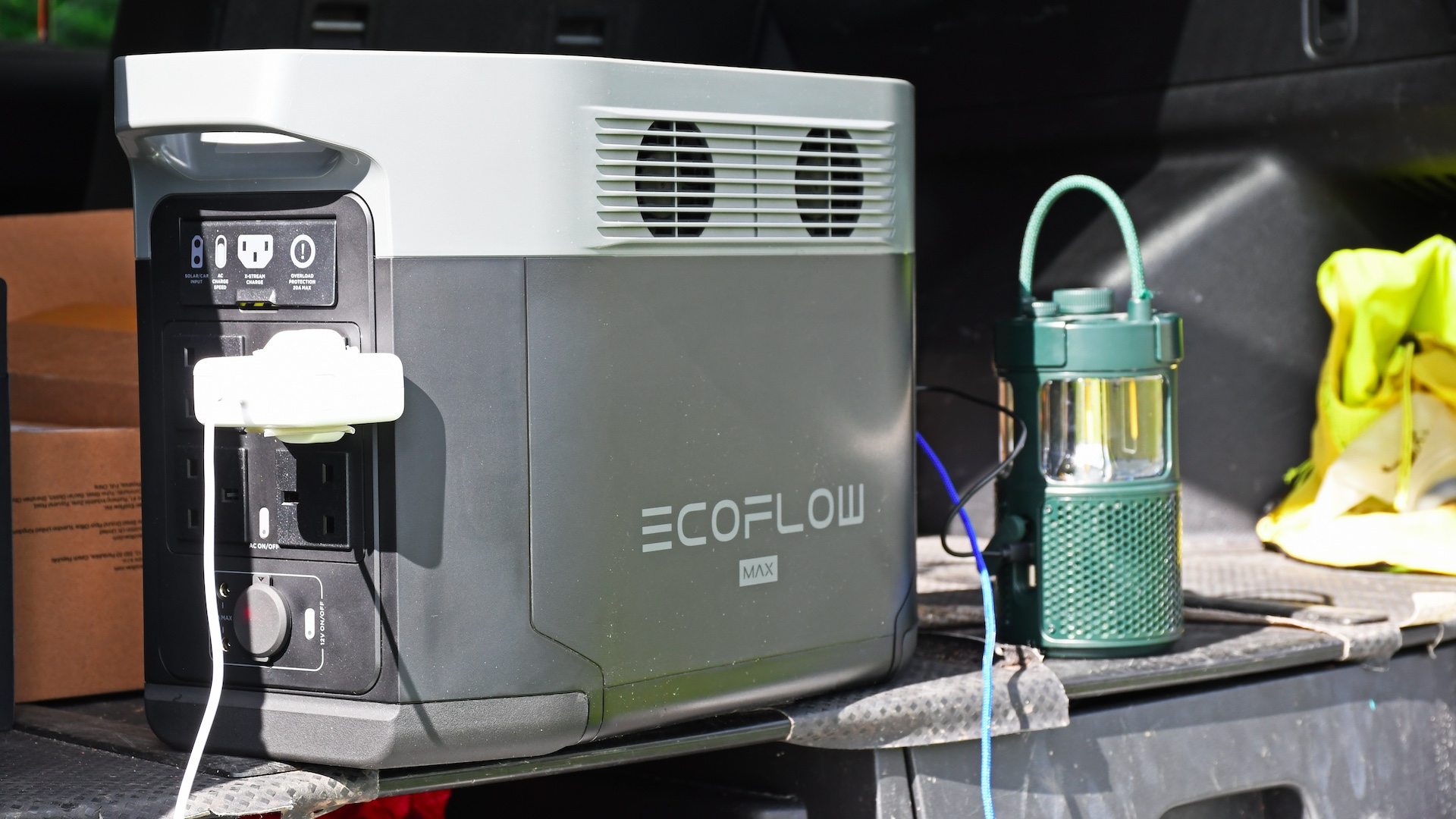
EcoFlow DELTA Max (2000): design and materials
A super suitcase of power with over 2,000Wh capacity, the EcoFlow DELTA Max can be charged up via multiple methods. At home you can simply plug it into any AC wall socket – the quickest way of charging the unit, this will take the battery from totally flat to 80% in 65 minutes, and fully charge the DELTA Max in just over an hour and a half.
While on the road, you can trickle charge the unit from the 12V outlet in the dash or at the back of your vehicle. Alternatively, install the innovative EcoFlow Alternator Charger, which is sold separately. This will charge the unit eight times faster than the auxiliary power outlets in your vehicle are capable of, topping it up at a rate of 1kWh in less than one and a half hours.
On site, if you have access to solar panels you can hook those up and let the sun do the running (EcoFlow produce a range of solar harnessing solutions that includes the top-notch 400W Portable Solar Panel).
Once the unit is charged, you can plug multiple devices into the DELTA Max via a range of outputs, including four three-pin AC sockets, four USB-A (including a couple of fast-charge options) and two USB-C 100w outlets.
A digital display on one side of the unit details the percentage of charge remaining in the batteries, and the number of hours you can expect it to last according to current usage. You can also see the wattage flowing into the EcoFlow DELTA Max when it’s being charged, and out when it’s in use. Link the unit to your phone and you can also monitor energy usage via an app.
On the rear there are two ports where you can plug in extra batteries, to extend the capacity of the unit even further.
EcoFlow DELTA Max (2000): in the field
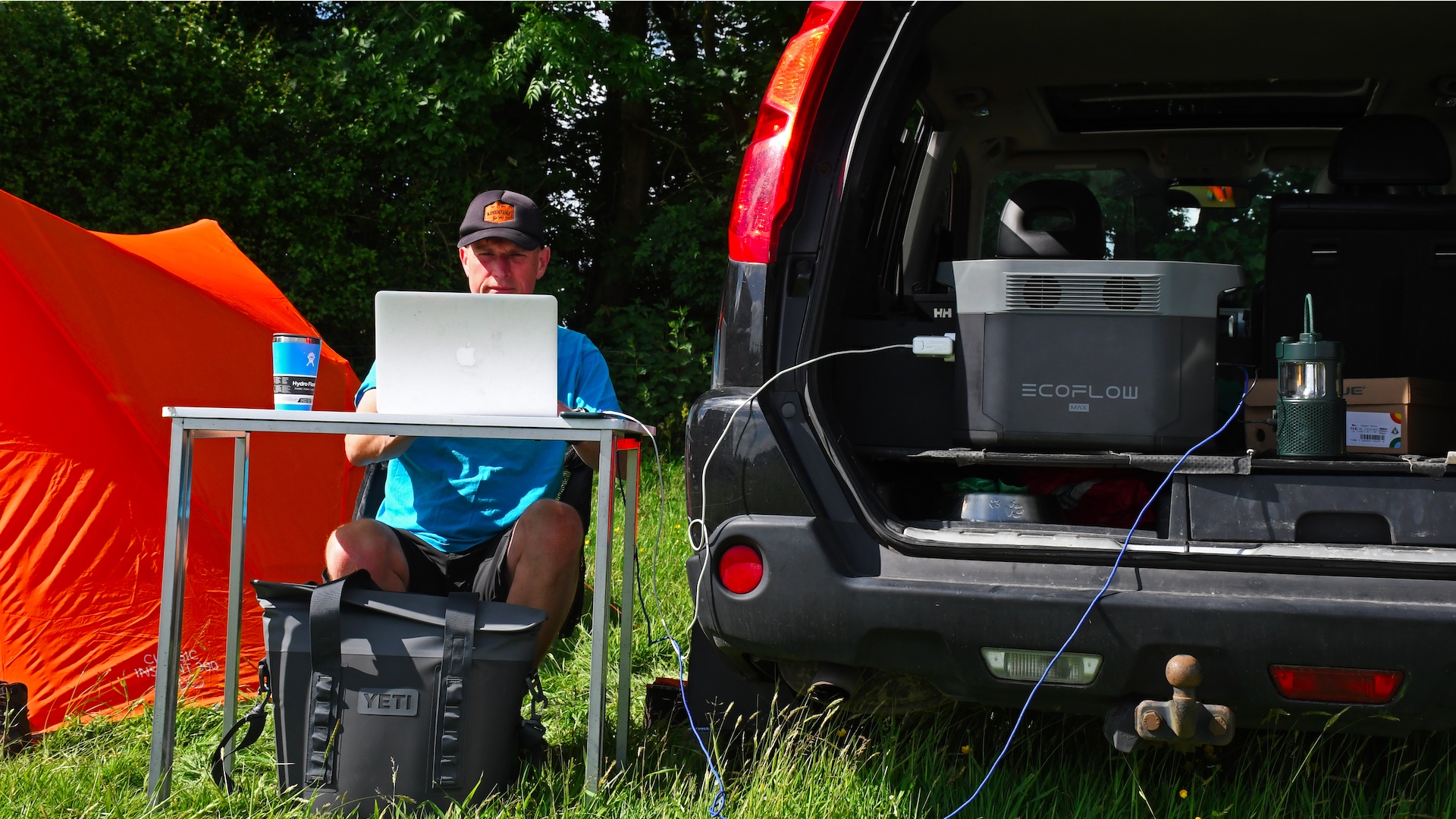
The outdoors nature of my job, and my involvement in several outdoor adventure events, mean that I often find myself working for multiple days in remote locations. Without access to mains power, it’s a real struggle to keep my laptop, phone and DSLR camera batteries charged – not to mention my head torch, watch and various other bits of kit I need in order to function properly and capture the content I need. During several such trips over the last few months the EcoFlow DELTA Max (2000) has really helped me stay productive for the entire time I’m out in the wilds. For anyone using drones in the backcountry, the ability to re-charge batteries quickly will prove invaluable.
I’m not – I’ll freely admit – the most technically minded person on the planet, but I have found the EcoFlow unit very easy and straightforward to use. For the majority of these trips – including a three-day gig managing the Top of the Gorge festival in Somerset – I was able to fully charge the unit at home on the morning before I left, and it kept all my devices going strong for the duration of the event.
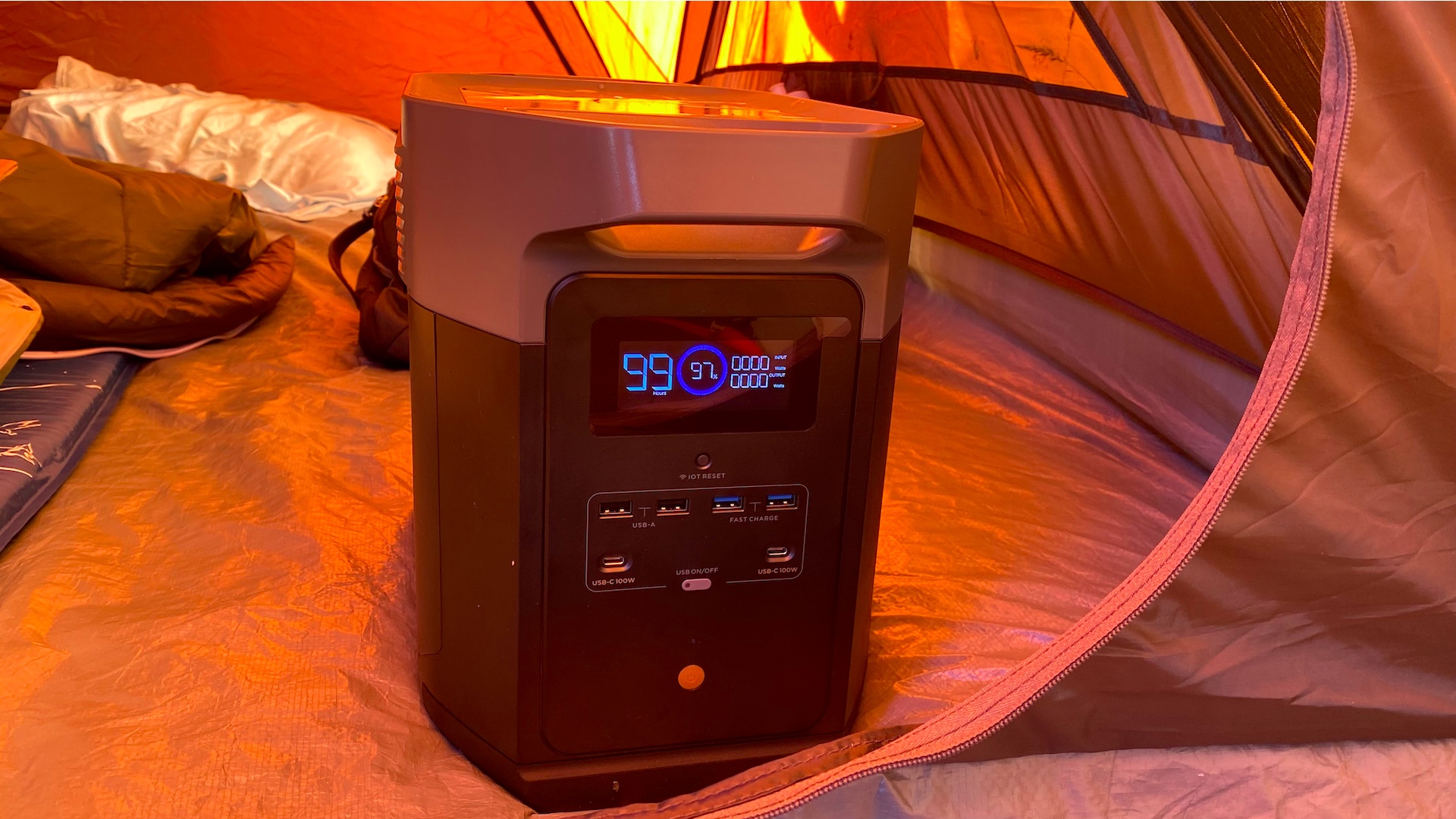
I was able to monitor energy usage and battery reserves throughout (on my phone and via the digital display on the unit), so I knew exactly how much juice I had left. I had the aforementioned EcoFlow Alternator Charger at the ready in case I needed to top it up, but the capacity of the unit is so good I could have easily spent another week on site with everything going full blast and still not have exhausted my portable power supplies.
I’ve been enjoying using the unit recreationally too. It’s far from a light piece of kit to cart around, so I wouldn’t take it on a short car-camping trip unless I needed to plug some serious equipment in, but if you need a reliable power source for remote work or play, then it’s a really excellent solution. Completely silent and odorless to run, unlike an old-school fuel-burning generator, it’s far less disruptive for you and your neighbours on site (although, you obviously can’t just top up the fuel, like you can with a generator).
And if you suffer from power cuts at home, it’s also a brilliant backup for keeping the fridge and freezer going, and the lights on.







